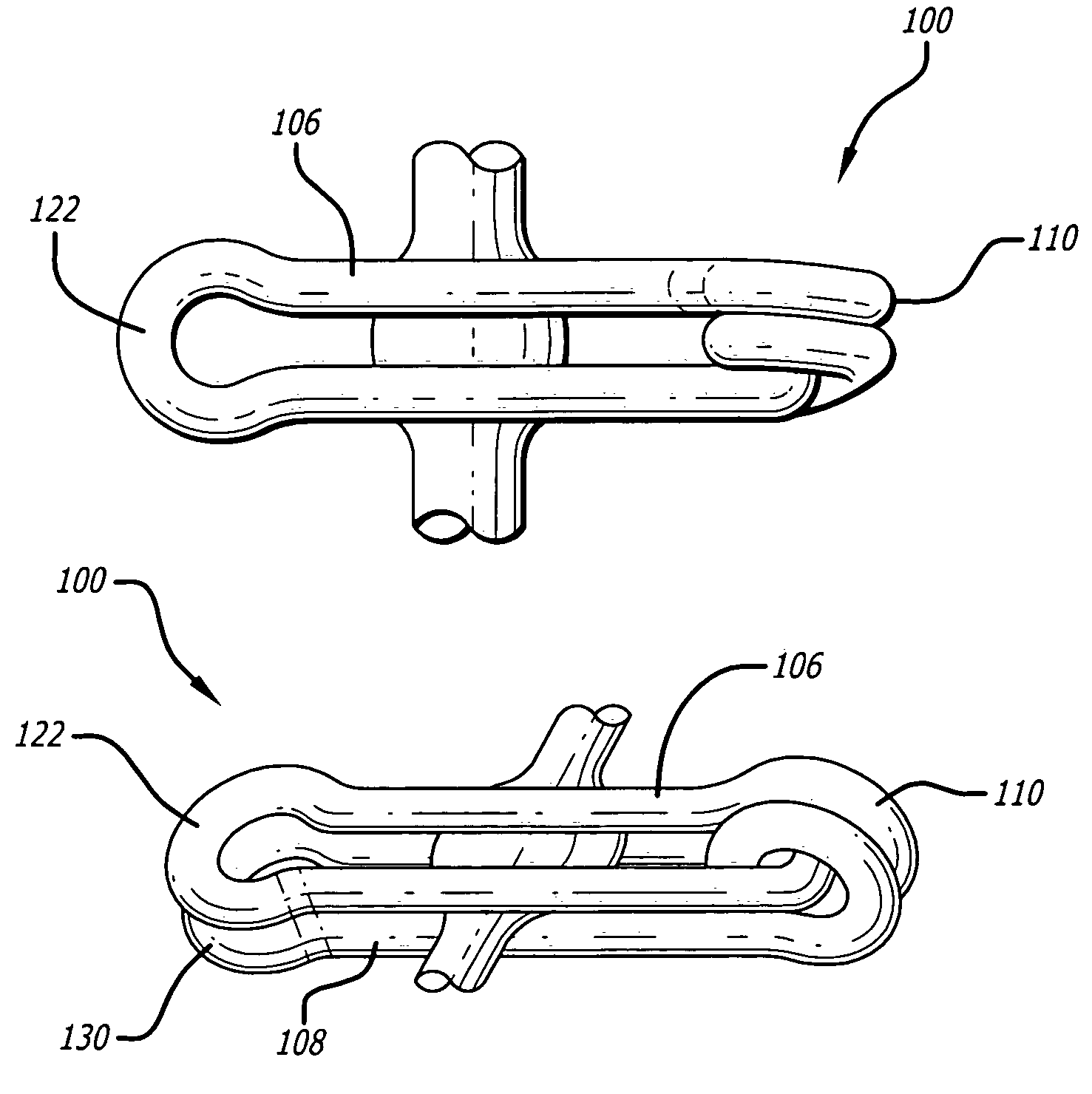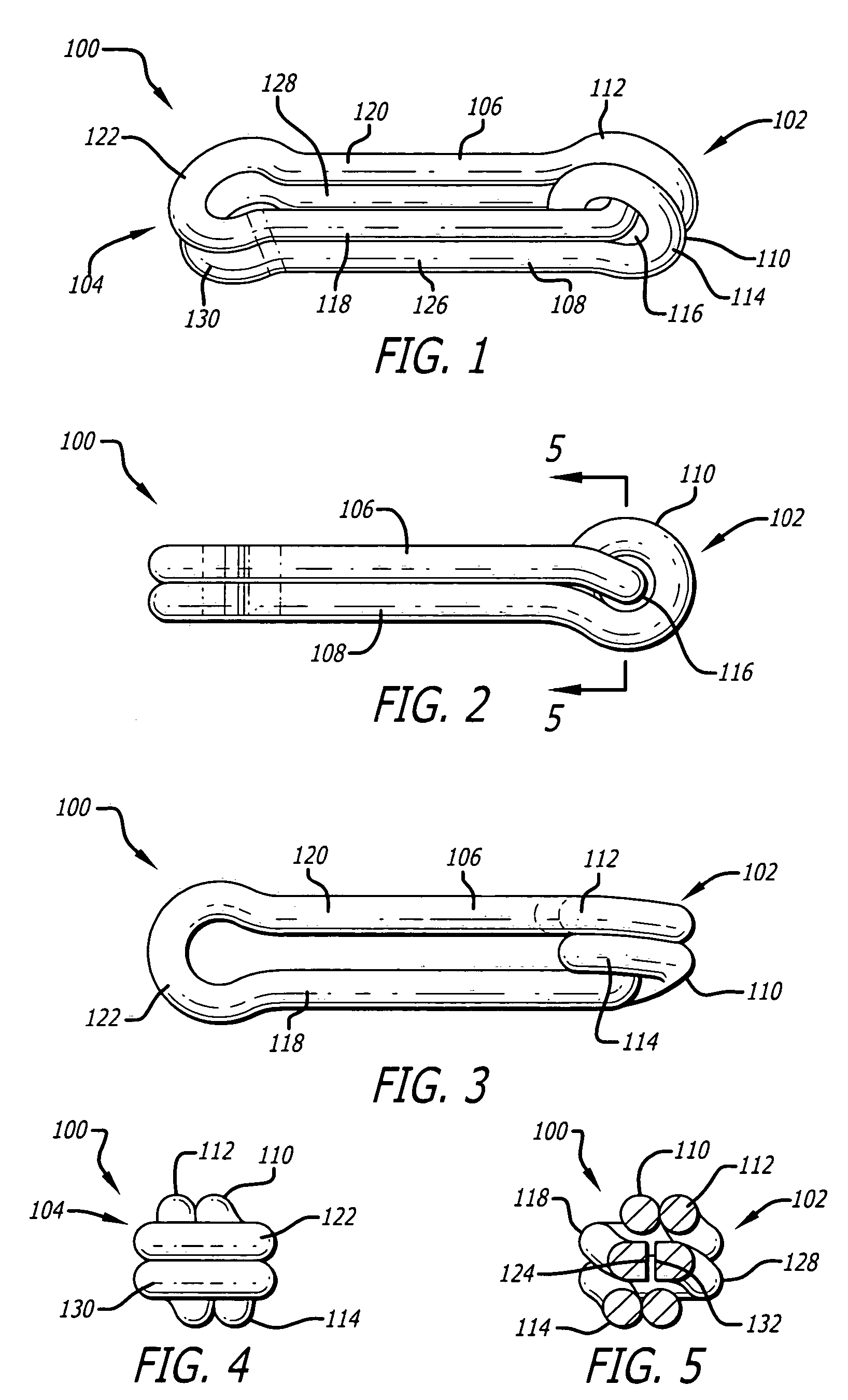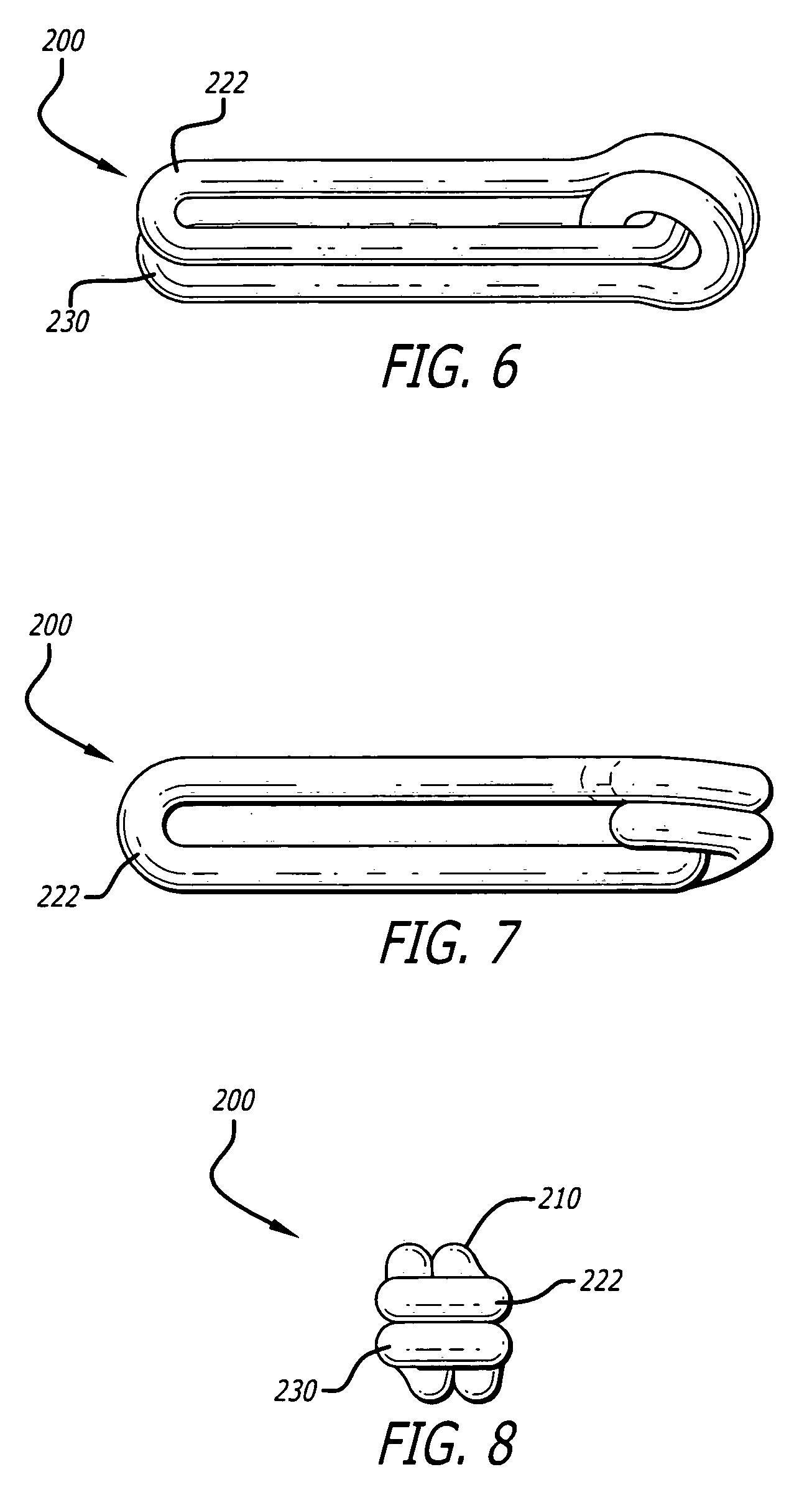Surgical ligation clip
a technology of ligation clips and clips, applied in the field of surgical ligation clips, can solve the problems of ligation clips, variable force applied by the clips to the vessel, and difficulty in removal or repositioning,
- Summary
- Abstract
- Description
- Claims
- Application Information
AI Technical Summary
Problems solved by technology
Method used
Image
Examples
Embodiment Construction
[0027]Reference will now be made in detail to the present preferred embodiments of the invention, examples of which are illustrated in the accompanying drawings. Wherever possible, the same reference numbers will be used throughout the drawings to refer to the same or like parts.
[0028]Referring now to the drawings and particularly to FIGS. 1 to 5, a surgical spring clip is shown and generally designated by the numeral 100. Clip 100 has a proximal end 102 and a distal end 104 opposite proximal end 102 along the mid-longitudinal axis of clip 100. Clip 100 includes an upper vessel support member 106 and a lower vessel support member 108. Upper and lower support members 106, 108 are joined together by a coil 110 at proximal end 102.
[0029]Coil 110 includes a first coil loop 112, a second coil loop 114, and an interior 116. First coil loop 112 is oriented generally parallel to the vertical longitudinal plane of clip 100. Second coil loop 114 is integrally joined to first coil loop 112 and...
PUM
 Login to View More
Login to View More Abstract
Description
Claims
Application Information
 Login to View More
Login to View More - R&D
- Intellectual Property
- Life Sciences
- Materials
- Tech Scout
- Unparalleled Data Quality
- Higher Quality Content
- 60% Fewer Hallucinations
Browse by: Latest US Patents, China's latest patents, Technical Efficacy Thesaurus, Application Domain, Technology Topic, Popular Technical Reports.
© 2025 PatSnap. All rights reserved.Legal|Privacy policy|Modern Slavery Act Transparency Statement|Sitemap|About US| Contact US: help@patsnap.com



